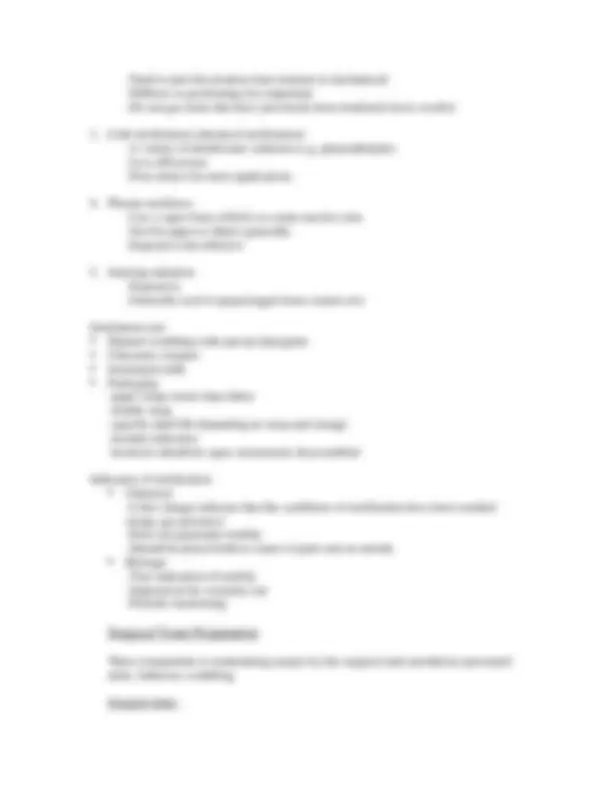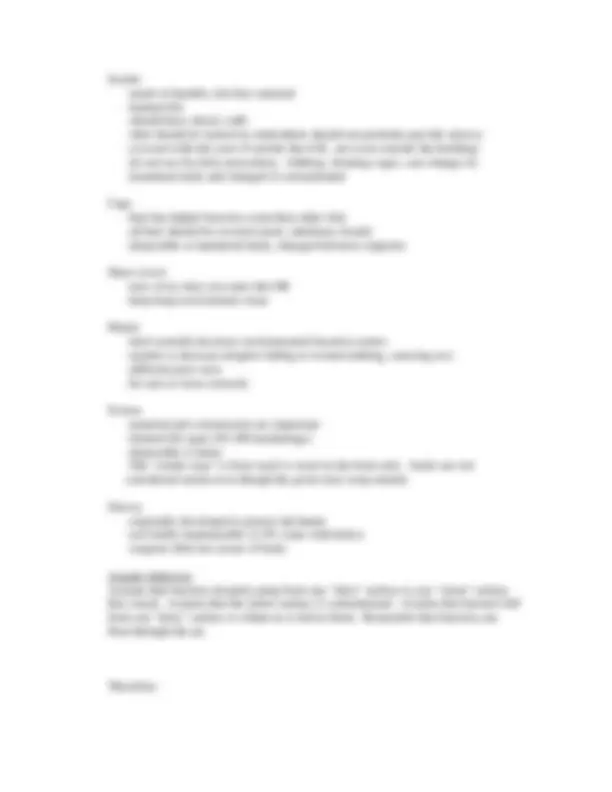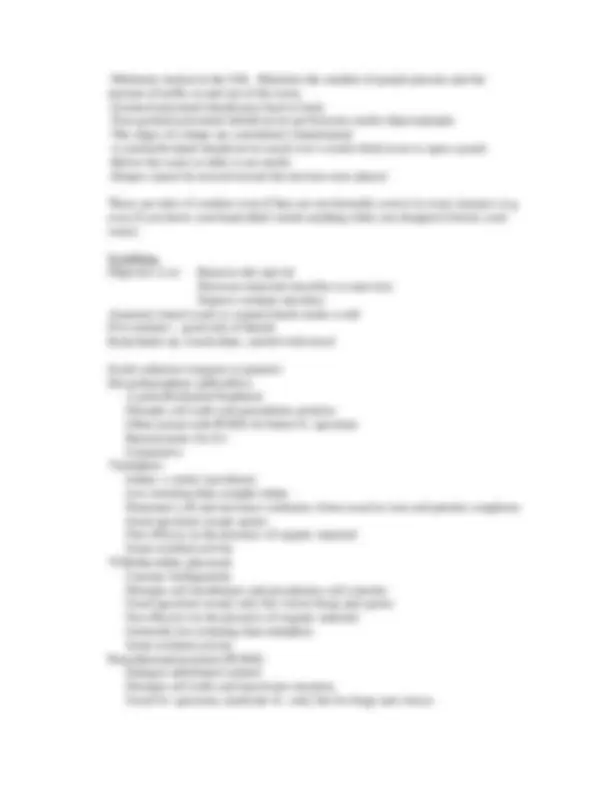





Study with the several resources on Docsity

Earn points by helping other students or get them with a premium plan


Prepare for your exams
Study with the several resources on Docsity

Earn points to download
Earn points by helping other students or get them with a premium plan
Community
Ask the community for help and clear up your study doubts
Discover the best universities in your country according to Docsity users
Free resources
Download our free guides on studying techniques, anxiety management strategies, and thesis advice from Docsity tutors
An in-depth understanding of asepsis, a process crucial in minimizing microbes and decreasing their transport to prevent infections during surgeries. It covers the pathogenesis of infections, surgical infections, prevention methods, sterilization techniques, and instrument care. The document also discusses the role of the surgical team in maintaining asepsis through appropriate attire, behavior, and scrubbing.
Typology: Study notes
1 / 7

This page cannot be seen from the preview
Don't miss anything!




Asepsis is the process of minimizing the number of microbes present and decreasing their transport in order to decrease infection (my definition). It includes a variety of rules and procedures, but is more of a mental state. In other words a surgeon cannot depend on having to consciously consider the impact of each action on asepsis - every action should automatically be done in an aseptic manner.
During aseptic surgery, not everything is sterilized (the killing of all microorganisms through chemical or physical means). Some items are only disinfected (the destruction on pathogenic microbes or the inhibition of their growth), while others are merely cleaned or covered. As a surgeon it is vital that you understand the concept of asepsis, the pathogenesis of infection, the contribution of the various components of surgical preparation and your role in maintaining the aseptic environment.
This discussion should be a review and summary of bacteriology and pathology notes; students are encouraged to consult those sources if they require a refresher.
Not every break in aseptic technique results in a surgical infection. No surgery is performed in a completely sterile manner since neither the patient nor the environment can be sterilized (therefore all wounds have some degree of contamination). The goal is to create and maintain a situation that makes infection unlikely to occur.
Surgical infections -Generally defined as 10^5 bacteria per gram of tissue -Fewer bacteria are required to begin colonization -Critical inoculating dose depends on the local environment, the patient, and the bacteria:
Patient factors Extremes of age Poor health (immunocompromised) Poor nutrition Shock/poor circulation
Environment factors Traumatized/necrotic tissue Exudate (hematoma!) Foreign material Antibiotics
Bacterial factors Virulence Number Most common source is patient (endogenous) Air is the most common vehicle (bacterial concentration in the air is proportional to the activity in the room) Staph and Strep most common. Fecal Gram-negatives also. Nosocomial infections.
Prevention Select patients appropriately Prepare patients appropriately Prepare personnel appropriately Sterilize equipment appropriately Maintain OR appropriately Use appropriate technique Maintain post-op care Be aware of factors that increase risk of infection -Length of surgery -Clipping hair prior to induction
Your responsibility as a surgeon will often include having an idea how the sterilizers function so you know what the appropriate methods are for a given item. You should understand how items should be arranged and how to determine if sterilization has been accomplished. You are responsible for assuring that your instruments are being cared for correctly.
Scrubs -made of durable, lint-free material -limited life -should have elastic cuffs -shirt should be tucked in; undershirts should not protrude past the sleeves -covered with lab coats if outside the O.R., not worn outside the building! -do not use for dirty procedures - bathing, cleaning cages, cast change etc -laundered daily and changed if contaminated
Caps -hair has higher bacteria count than other skin -all hair should be covered (neck, sideburns, beard) -disposable or laundered daily, changed between surgeries
Shoe covers -new every time you enter the OR -help keep environment clean
Masks -don't actually decrease environmental bacteria counts -mainly to decrease droplets falling to wound (talking, sneezing etc) -different pore sizes -be sure to wear correctly
Gowns -material and construction are important -limited life span (50-100 launderings) -disposable is better -The "sterile zone" is from neck to waist in the front only - backs are not considered sterile even though the gown may wrap around.
Gloves -originally developed to protect the hands -not totally impermeable (2-4% come with holes) -surgeon often not aware of holes
Aseptic behavior: Assume that bacteria instantly jump from any "dirty" surface to any "clean" surface they touch. Assume that the entire surface is contaminated. Assume that bacteria fall from any "dirty" surface to whatever is below them. Remember that bacteria can float through the air.
Therefore:
-Minimize motion in the O.R. Minimize the number of people present and the amount of traffic in and out of the room. -Gowned personnel should pass back to back -Non-gowned personnel should never get between sterile objects/people -The edges of a drape are considered contaminated -A nonsterile hand should never reach over a sterile field (even to open a pack) -Below the waist or table is not sterile -Drapes cannot be moved toward the incision once placed
These are rules of conduct even if they are not factually correct in every instance (e.g. even if you know your hand didn't touch anything when you dropped it below your waist).
Scrubbing: Objective is to: Remove dirt and oil Decrease transient microbes to near zero Depress resident microbes Anatomic timed scrub or counted brush stroke scrub Five minutes – good rule of thumb Keep hands up, watch drips, careful with towel
Scrub solutions (surgeon or patient): Hexachlorophene (pHisoHex) A polychlorinated bisphenol Disrupts cell walls and precipitates proteins Often mixed with PCMX for better G- spectrum Bacteriostatic for G+ Cumulative *Iodophors Iodine + carrier (povidone) Less irritating than straight iodine Penetrates cell and increases oxidation, forms reactive ions and protein complexes Good spectrum except spores Fair efficacy in the presence of organic material Some residual activity *Chlorhexidine gluconate Cationic bisbiguanide Disrupts cell membranes and precipitates cell contents Good spectrum except only fair versus fungi and spores Not effective in the presence of organic material Generally less irritating than iodophors Some residual activity Parachlorometaxylenol (PCMX) Halogen substituted xylenol Disrupts cell walls and inactivates enzymes Good G+ spectrum, moderate G-, only fair for fungi and viruses
Draping Isolate the field Secure drapes Use impermeable drapes Special draping techniques for various situations
Clean - daily routine Separate - not used for other purposes Appropriately ventilated - positive pressure ventilation, laminar flow, high turnover Closed - keep doors closed Low traffic - only essential, properly attired personnel Clean and dirty OR’s